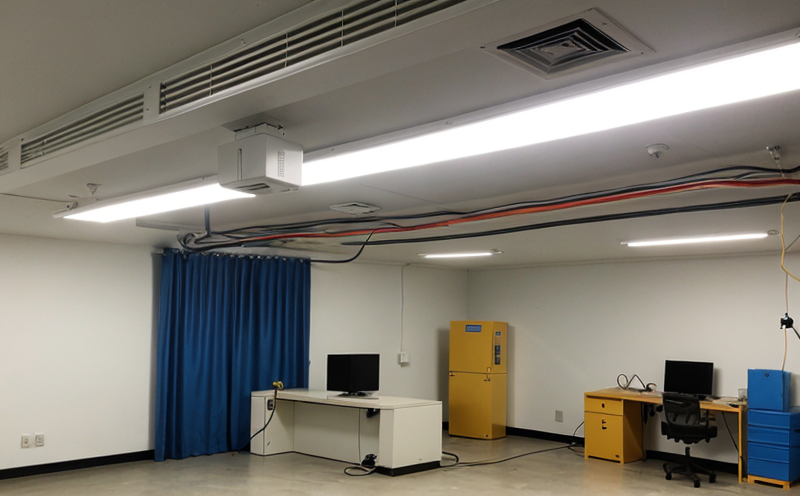EN 12464-1-1 Indoor Workplace Lighting
The European Standard EN 12464-1-1 is a crucial document in the field of building and infrastructure testing, specifically addressing indoor workplace lighting. This standard ensures that workplaces are adequately illuminated to support health, safety, and productivity, aligning with broader EU directives on occupational safety and health.
The standard's primary focus is on the design, installation, and commissioning of artificial lighting systems in indoor workspaces. It provides detailed guidelines for ensuring that light levels meet or exceed specified requirements, which are essential for preventing accidents and promoting worker comfort and efficiency. Compliance with EN 12464-1-1 is not only a legal requirement but also enhances the overall quality of life and productivity within the workplace.
When it comes to electrical and lighting systems testing under this standard, laboratories must employ rigorous procedures that adhere strictly to the defined criteria. This includes thorough inspections of luminaires, light distribution patterns, color rendering indices (CRI), and uniformity ratios. The testing process is designed to simulate real-world conditions as closely as possible to ensure accurate assessment.
One key aspect of EN 12464-1-1 involves the measurement of illuminance levels at various points within the workspace. This ensures that no area is too dark or too bright, which can lead to discomfort and errors in tasks requiring visual accuracy. Additionally, the standard mandates testing for glare factors, ensuring that workers are not subjected to excessive light reflections that could cause eye strain.
The standard also addresses the impact of lighting on circadian rhythms and human health. It recommends the use of tunable white lights capable of adjusting color temperature based on time of day, which can help maintain natural sleep patterns and enhance cognitive performance throughout the workday. This consideration is particularly important in modern smart building designs where flexibility in lighting systems is a key feature.
Testing for compliance with EN 12464-1-1 requires specialized equipment such as photometers, lux meters, colorimeters, and glare meters. These devices are used to measure various parameters including average illuminance, uniformity, and CRI. The testing process involves setting up the workspace according to the standard's requirements and then measuring these parameters at multiple points.
Another critical element of this standard is its emphasis on the psychological effects of lighting. Adequate lighting can significantly improve mood and reduce stress levels among employees. This aspect requires a holistic approach where light sources are not just functional but also aesthetically pleasing, contributing to a positive work environment.
Why It Matters
The importance of EN 12464-1-1 cannot be overstated. Properly designed and installed lighting systems are fundamental for maintaining productivity and safety in indoor workplaces. According to studies, poor lighting can lead to increased errors, reduced worker satisfaction, and higher accident rates.
From a legal perspective, failing to comply with this standard could result in costly fines and potential liability issues. Moreover, non-compliance may be considered an infringement of workers' rights under EU labor laws. Ensuring compliance not only avoids these risks but also enhances the reputation of the organization as a responsible employer.
On a broader scale, adhering to EN 12464-1-1 helps create healthier and more comfortable work environments, which can lead to improved employee morale and reduced absenteeism. This aligns with global trends towards creating sustainable and people-centric workplaces.
Scope and Methodology
| Aspect | Description |
|---|---|
| Luminaires Inspection | Involves checking the quality and suitability of luminaires for the specified environment. |
| Light Distribution Patterns | Evaluates how light is distributed across different areas to ensure even illumination. |
| Color Rendering Index (CRI) | Determines the ability of a light source to accurately render colors in comparison with natural daylight. |
| Uniformity Ratios | Metric for assessing how uniformly light is distributed across an area, ensuring no hotspots or dark spots. |
Environmental and Sustainability Contributions
- Reduces energy consumption by optimizing the use of daylight through smart lighting systems.
- Promotes natural light use to reduce dependency on artificial lighting, thereby lowering carbon footprints.





